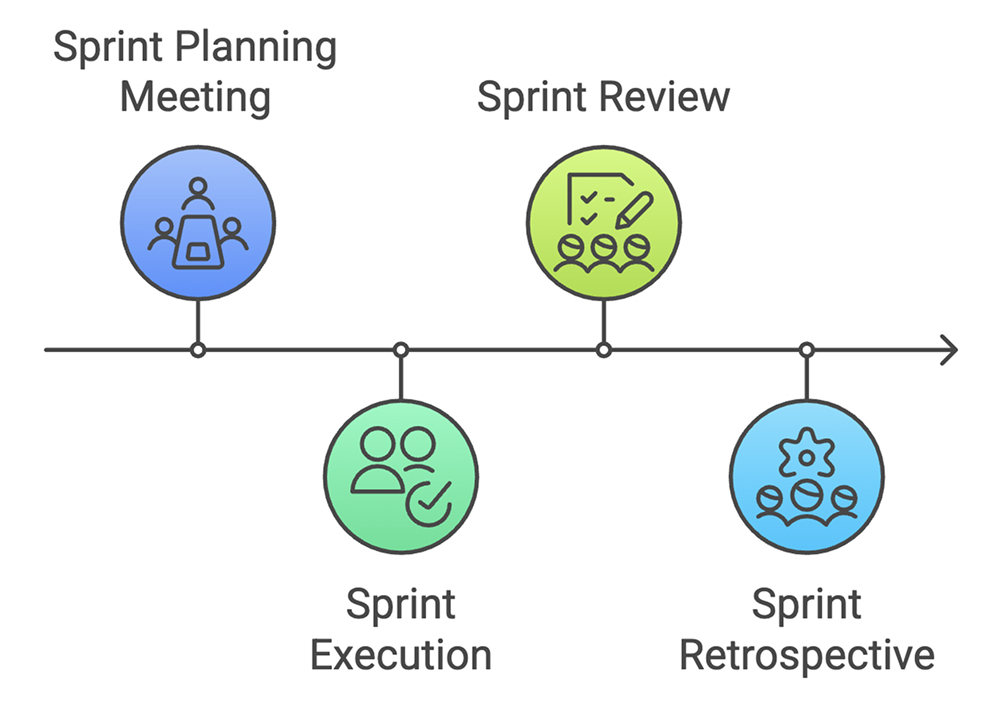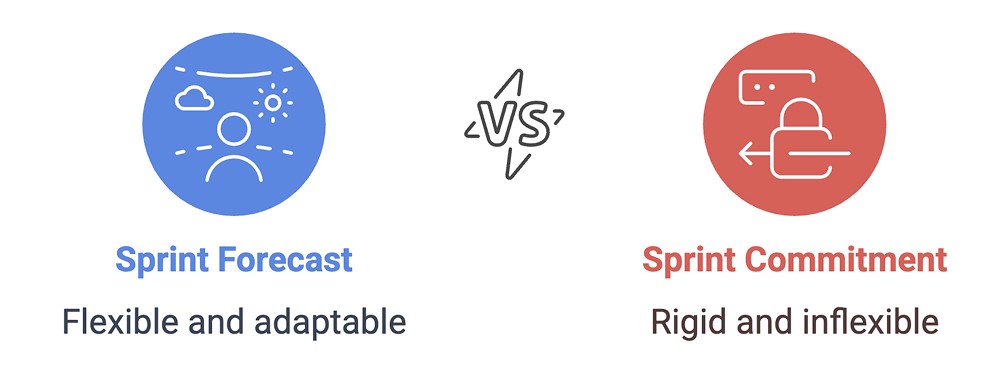Sprint forecasting is a fundamental part of Agile project management. It refers to the estimation and planning process used by Scrum teams to determine how much work they can realistically complete during a sprint cycle. Unlike a fixed commitment, a sprint forecast is a best-effort prediction based on the team’s experience, capacity, and the complexity of tasks.
Understanding sprint forecasting is crucial for maintaining sustainable delivery, enhancing predictability, and fostering trust with stakeholders.
What Is a Sprint?

A sprint is a short, fixed period of time, typically ranging from 1 to 4 weeks. At the beginning of the sprint, the team holds a sprint planning meeting to decide what work they will try to complete. This is where sprint forecasting happens. The team assesses what is possible to complete during the sprint.
The team selects tasks from the product backlog, prioritizing them based on business value importance, level of urgency, and estimated effort required. Based on their velocity, they decide how much work they can realistically take on for the sprint.
Once the sprint starts, the team focuses only on the selected tasks. At the end of the sprint, they review what was completed (in a sprint review) and discuss what went well and what could be improved (in a retrospective).
What Is Sprint Forecasting?
Sprint forecasting is the process of estimating what a team believes it can achieve in an upcoming sprint. This forecast is based on:
- The team’s velocity (average work completed in previous sprints)
- The size and complexity of backlog items
- The team’s availability during the sprint (vacations, holidays, etc.)
- Any external dependencies or blockers
The team selects backlog items they believe they can complete and sets a sprint goal based on that forecast.
Sprint Forecast vs. Commitment

It’s common to hear the terms “sprint forecast” and “sprint commitment” used interchangeably, but they are not the same:
- A sprint forecast is a prediction of what the team believes it can complete. It’s flexible and allows for learning and change.
- A sprint commitment is an older Scrum concept where teams were expected to fully deliver everything they planned, regardless of changes or issues.
Modern Scrum (since the 2011 Scrum Guide update) encourages forecasting over strict commitments. The focus is on learning and adaptability rather than delivering at all costs.
Why Sprint Forecasting Matters
- Predictability: Forecasts help teams and stakeholders understand what is likely to be delivered in the short term.
- Focus: It gives the team a clear direction and helps them stay aligned with the sprint goal.
- Transparency: Stakeholders get visibility into progress and expectations without rigid deadlines.
- Continuous Improvement: Teams can reflect on their forecasting accuracy during retrospectives and adjust their future estimates accordingly.
The Sprint Forecasting Process
Here’s how sprint forecasting usually works in Scrum:
- Sprint Planning Meeting: The product owner presents prioritized backlog items to the team. These items are refined and well-understood.
- Team Reviews Capacity: The team reviews its availability for the sprint (e.g., vacations, public holidays, and other meetings).
- Estimation: The team estimates backlog items using story points, t-shirt sizes, or other methods.
- Velocity Consideration: The team checks how much work they’ve completed in previous sprints (velocity) to inform how much they can take on.
- Create the Sprint Forecast: Based on velocity, capacity, and item complexity, the team selects a set of stories they believe they can complete.
- Set the Sprint Goal: A clear goal is defined that gives purpose to the sprint and ties the selected work together.
Common Mistakes in Sprint Forecasting
- Overcommitting: Taking on too much work due to pressure or optimism.
- Ignoring past velocity: Not using past data leads to unrealistic forecasts.
- Poor refinement: Forecasting based on vague or unrefined backlog items.
- Not considering team capacity: Failing to factor in absences or other responsibilities.
- Confusing forecast with commitment: Believing the forecast is a promise can lead to a blame culture.
Tips to Improve Sprint Forecasting
- Use consistent estimation techniques (e.g., story points).
- Track team velocity regularly.
- Discuss availability upfront during sprint planning.
- Keep backlog items refined and clear.
- Review forecasts during retrospectives to learn and adapt.
- Encourage a growth mindset: forecasts are tools for learning, not promises to be fulfilled.
Sprint Forecasting in Scaled Teams
In larger organizations that use frameworks like SAFe or LeSS, sprint forecasting may occur at the team level. But it also feeds into program increment planning or release forecasting. The same principles apply to transparency, collaboration, and realistic expectations.
Conclusion
Sprint forecasting is an indispensable practice of Agile as it keeps teams on track, engaged, and actively seeking ways to improve. It’s not about achieving perfection; it’s about learning from every single sprint, adapting, and establishing a sustainable development velocity.
By replacing rigid commitments with flexible, data-informed forecasts, Scrum teams can better respond to change while still delivering on goals. When done well, sprint forecasting becomes a powerful habit that fuels team confidence and stakeholder trust.
